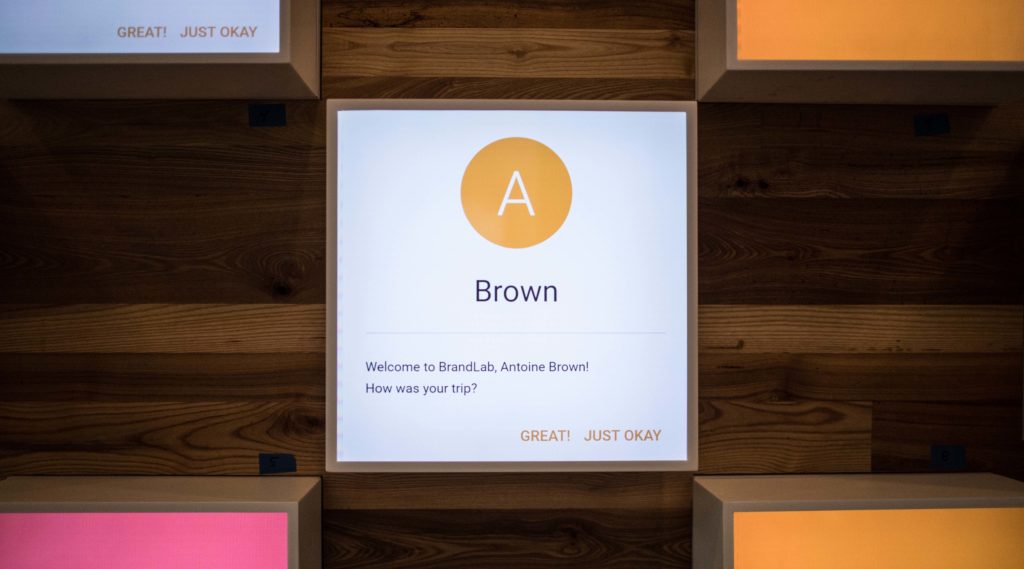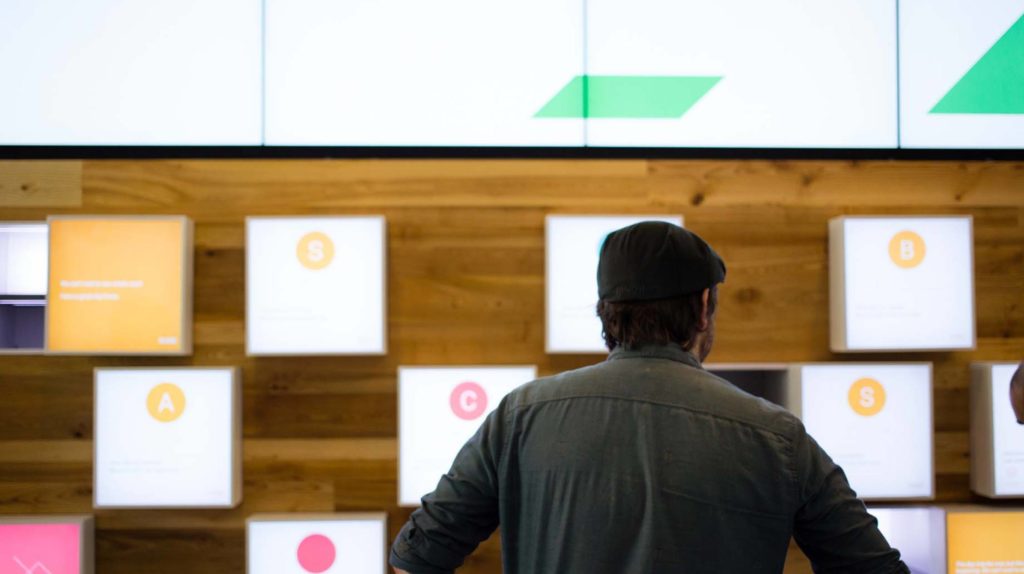Google BrandLab
Cubby

Cubby is an interactive installation devised to welcome VIP visitors to the Google BrandLab space and prepare them for their workshop experience
The Challenge
BrandLab is advertised as “a customer experience center dedicated to evangelizing the art and science of brand building through hands-on, interactive workshops with marketers.” At the beginning of this project, we were tasked with redesigning a single wall in BrandLab’s San Bruno workshop space. Our question was this: “How can the existing wall be reconsidered to not just fit within the space visually, but to be an integral part of the workshop experience?”
If designed effectively, Cubby’s user experience would provide an engaging distraction-free experience for brand professionals seeking to better leverage Google’s tools and platforms. If implemented effectively, Cubby would also illustrate the value of a screens-free workshop as a concept.
Our Solution
Considering the connection between architecture, story, and company culture, we began to design the wall. “BrandLab” was the story we were telling, and every aspect of our design needed to communicate the critical plot points about what BrandLab is and why it matters. The wall wasn’t the cover; it was the prologue: a self-contained entry point that sets the stage for the rest of the workshop experience.
Our final solution tied to Google’s mission to inspire, educate, and align global marketers, all in a setting free from device-borne distractions.
Increasing device-free engagement from the moment guests arrive
BrandLab was conceived as a screens-down workshop, a difficult proposition for high-powered executives who rely on devices for their work. As such, Cubby’s user experience is designed to create a warm welcome for guests and kick things off on a positive note.
Each Cubby is personalized with the guest’s name and a series of prompts and questions. The initial entry point begins a personalized workshop story that continues to evolve throughout the day, gathering information about the experience.

Once guests complete the arrival sequence, there’s a final surprise. The touchscreen slides away to reveal a storage area. Inside, all the materials they’ll need for the day are presented, including a customized notebook and pen. Guests are then encouraged to leave their phones and laptops in the Cubby to charge safely during the workshop.
Finally, as guests are preparing to leave at the end of the day, the wall shifts into its final mode. Here, the wall serves as a retrospective, showing photos from the day and soliciting feedback about their time at BrandLab. This time, when they open their Cubby, they find not only their fully-charged phones and laptops but also a special thank-you gift.
Fresh Portland designed Cubby to be flexible, so BrandLab could engage with guests in different ways as the workshop progressed. For instance, a “quiet mode” takes over while the workshop is in session. Quiet mode features more subtle animations designed to prevent distraction while still making it easy for guests to find their Cubbies. In the afternoon, as guests leave the space for lunch, the wall adapts again. This time the focus is on comparing top trending YouTube videos in the guest’s chosen demographic with those of the audiences they’re learning about in the workshop.

First-hand experience in all things Google
From Material Design frameworks to official code classes and accessibility guidelines, an extensive project history with Google speaks to our deep understanding of the organization’s systems and goals. We’ve partnered with Google’s Experience Studio to create immersive, story-driven spaces for Google’s top visiting guests, our ongoing collaboration has bolstered our ability to deliver value quickly and efficiently.
The body of work involves interfaces, prototypes, and fully-functioning build-outs, all falling within Google’s best practices for design, code, and VIP-quality system reliability. We look forward to continuing to collaborate and think outside the box when it comes to customer experience.

